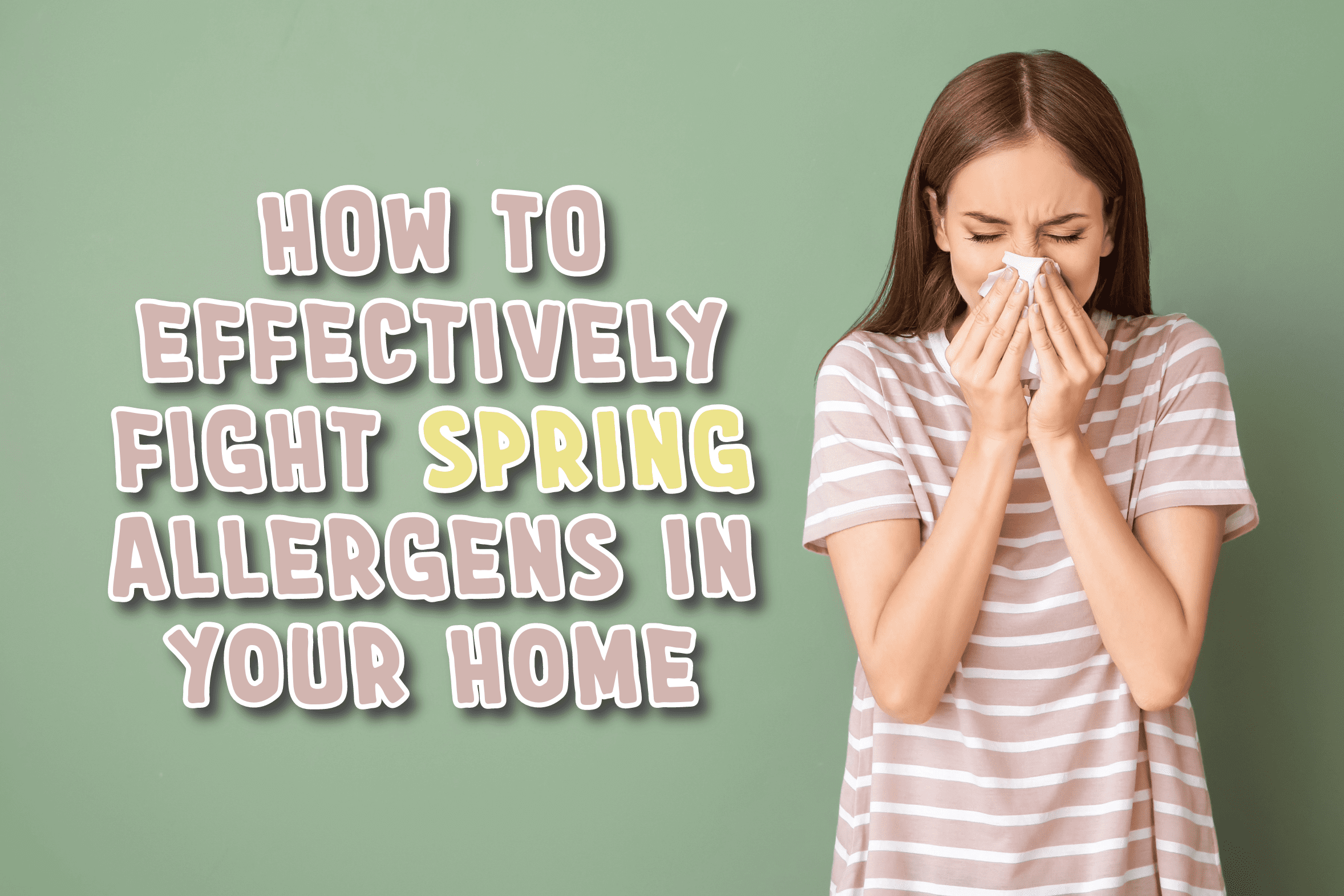March 19th of this year marks the official arrival of spring. As the warmer weather rolls in and beautiful flowers start to bloom, many of us are excited as it feels like it has been long overdue. However, the spring season is a dreaded time of the year for many people. This is because the spring season also brings what many have to endure – seasonal allergies. Allergies can cause a variety of unpleasant symptoms commonly known as hay fever. So, if you suffer from allergies in Ohio, here are practical solutions from Springfield Heating & Cooling to combat allergens in your home.
What the Symptoms of Hay Fever Are
Hay fever, also known as allergic rhinitis, is the most common type of allergy in Ohio. It happens when your immune system overreacts to allergens like pollen, triggering the production of histamines that lead to allergy symptoms. These symptoms can vary from mild to severe and may persist for weeks or even months.
Common hay fever symptoms include:
· Sneezing
· Runny or stuffy nose
· Itchy eyes, mouth, throat or skin
· Ear congestion
· Postnasal drip
If you frequently experience these symptoms in spring and summer, it is likely that you have hay fever caused by the surrounding allergens.
Why the Landscape Causes Allergies
In order to understand the high pollen and allergy levels in Ohio, it’s important to consider our diverse landscape. Ohio comprises urban areas, farmland, forests, lakes, and rivers, each with different plants and trees that produce pollen. This variety of landscape and environmental factors contribute to longer allergy seasons, typically lasting from February to November.
What Are the Types of Allergens in Ohio
These include but are not limited to:
· Tree Pollen: Pollen from trees like oak, maple, birch, cedar, pine, and hickory can cause allergies, especially in spring.
· Grass Pollen: Grasses such as Kentucky bluegrass, timothy grass, and Bermuda grass release pollen, leading to allergies, particularly in late spring and early summer.
· Weed Pollen: Ragweed is a major weed in Ohio that produces abundant pollen in late summer and early fall, causing allergies for many people.
· Mold Spores: Mold spores are a common allergen in Ohio. Mold can grow on decaying vegetation, leaves, and other organic matter.
Practical Home Solutions
While complete prevention of allergies can be challenging, there are practical solutions you can implement at home to reduce the impact of allergens.
To reduce allergies:
1. Close windows during peak pollen season (usually spring and summer).
2. Vacuum regularly using a HEPA filter to remove allergens from carpets and furniture.
3. Wash bedding and curtains frequently in hot water to eliminate pollen and other allergens.
4. Shower immediately after being outdoors to wash off any pollen or allergens.
5. Dust often, especially on surfaces like bookshelves that collect dust.
6. Change air filters regularly (every 1-2 months) to prevent allergens from circulating in your home.

Did you know that hay fever affects approximately 20% of people at some point in their lives?
Recommended Professional Solutions
Incorporating practical home solutions into your daily life is the best way to find immediate relief. However, there may be situations where seeking professional solutions or services becomes necessary. Here are a few suggestions you might want to consider:
Get a Whole-Home Purifier – A whole-home air purification system can be installed in your HVAC system to continuously clean and purify the air in your home. This is especially beneficial if you are aiming to raise the overall indoor air quality within your household. Consider using the iWave whole-home air purification system. It uses advanced ionization technology to reduce allergens, bacteria, viruses, and other particles that can cause allergies and respiratory issues. Feel free to call us for more information!
Get a Whole-Home Dehumidifier – If you are experiencing excessive moisture levels in your home, we know how frustrating that can be to deal with. Plus, high humidity levels can create a breeding ground for allergens like mold. To combat this, installing a whole-home dehumidifier can help reduce moisture in your home, making it less suitable for these allergens.
Install a Smart Thermostat – A smart thermostat can help you keep an eye on the humidity levels in your home letting you know when you need to take action to correct it. Plus, it can also notify you when your air filters need to be changed.
Schedule a Duct Cleaning – According to the EPA, indoor air can be up to five times more polluted than outdoor air. This pollution includes allergens like pollen, dust mites, and mold spores that can accumulate in your home’s ductwork. Having your air ducts professionally cleaned can improve overall air quality and reduce allergy symptoms. The good news is this service is only needed every three to five years.
Have any of these options caught your interest? Feel free to give us a call to discuss which one would be the best fit for you, your family, and your home!
Allergies are a widespread issue, but you can minimize their impact on your daily life with practical solutions. By understanding the causes and symptoms of allergies and implementing home and professional remedies, you can enjoy springtime without constant suffering. Take control of your allergies today, and remember to contact us for all your HVAC air quality needs.
Count on Springfield Heating & Cooling for anything HVAC-related! Call us today at (937) 350-1881, or schedule an appointment online now by clicking here!





